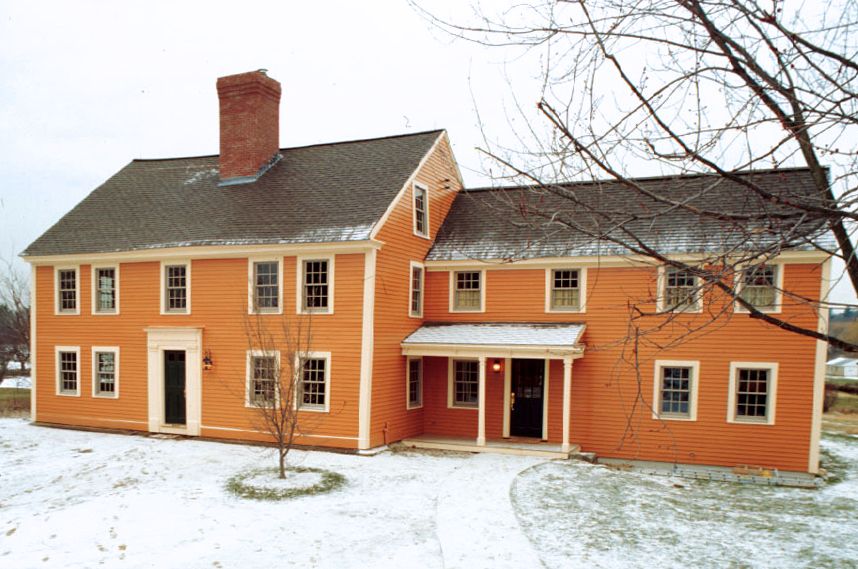In the spring of 1994, we took on our oldest house yet, a c. 1710 Colonial in Acton, Massachusetts. Known as the Knight-Forbush Homestead, it was Acton’s oldest home as well, built by one of the town’s first settlers and later inhabited by a sergeant who fought in the nearby Battle of Lexington and Concord in 1775.
Though the house looked big from the outside, inside it was anything but. Factor in a gargantuan center chimney stack, ceilings well under seven feet, Terry and Sima Maitland and their three young children and the space disappeared quickly. From our first walk-through—when the Maitlands sheepishly revealed the dishwasher they had to store in the dining room for lack of space in the kitchen—it was clear the house needed a sizable addition, and one that was very sympathetic to the homespun charm of the existing building.
We enlisted architect Chris Dallmus of Design Associates, a firm whose specialty is “contextual architecture.” He designed a two-story side wing that was subordinate to the original building, but with its clapboarding, simple trim, and farmer’s porch looked as if it had always been there. Inside were a new kitchen, laundry room, mud room, family room and master bedroom suite.
Silva Brothers Construction had the daunting task of repairing the extensive rot in the rear of the old building; a particularly dramatic moment came when they pinned the east side in mid-air so that the new addition and its foundation could be grafted on. The factory-built foundation system arrived on a truck from Poughkeepsie. Pre-stressed concrete panels—engineered to meet the required load, custom sized for the job, pre-insulated, and furred out for drywall—were put together in record time and installed at reduced cost.
Though it wasn’t surprising to find lead paint in such an old house, detecting and removing it took on a special urgency when a blood test revealed that one of the Maitland children had elevated lead levels. A professional deleading crew was called in, and the primary culprits—the old windows—were replaced.
Special attention was paid throughout the job to blending the old with the new. We located centuries-old wide-pine floorboards and laid them in the new kitchen and family room. The chimney was repaired with appropriate water-struck bricks. The Maitlands looked to historic examples to choose the exterior paint scheme, an arresting orange and cream combination that had wags on the crew calling the house “The Great Pumpkin.”
For a final gesture, we decided to replace the inauthentic, too-rustic front door and its surround. Inspired by Acton’s many great 18th-century examples, we designed and constructed an historically accurate entryway to give the house the proper “face” again.
Other project highlights included:
- A visit to the oldest wood-frame house in the United States, the c. 1636 Fairbanks House in Dedham, Massachusetts.
- Our first use of polyicynene foam insulation. Sprayed into stud bays as a liquid, it expands to 100 times its volume and both insulates and acts as an air sealant.
- The discovery of an old water well on the property. For the cost of a pump and a few dollars a month in electricity, the owners gained virtually unlimited irrigation water—a real find for their five acres of land.
- A field trip to a house that was originally built in 1760 as a tavern in Northfield, Massachusetts. The tavern was de-constructed—nail for nail, board for board—transported to a sublime, 110-acre site in Concord, Massachusetts, and re-erected. A brilliant project whose ultramodern conveniences were hidden behind ancient architecture.
- Tours of factories where power tools are made and brass door hardware is cast, and the workshop where craftsmen built the Maitland’s custom cherry kitchen.

